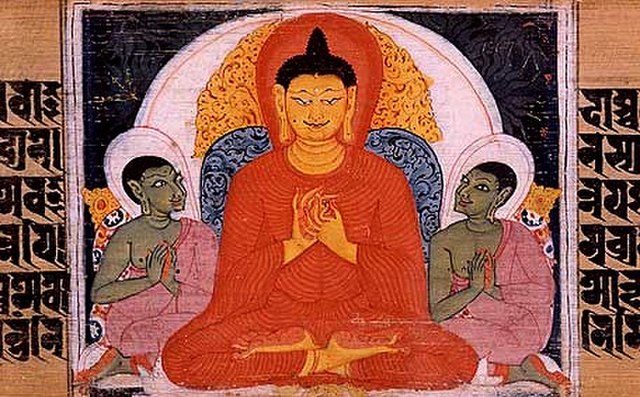Navayāna, otherwise known as Navayāna Buddhism, refers to the modern re-interpretation of Buddhism founded and developed by the Indian jurist, social reformer, and scholar B. R. Ambedkar; it is otherwise called Neo-Buddhism and Ambedkarite Buddhism.
A Navayāna Buddhist shrine with Ambedkar's portrait and The Buddha and His Dhamma book. The photograph is on the event of the 50th Dhammachakra Pravartan Day.
Buddhist flag of Navayana Buddhists
Inscription of 22 vows at Deekshabhoomi, Nagpur
Ambedkar delivering a speech during mass conversion in Nagpur, 14 October 1956.
In Buddhism, the Four Noble Truths are "the truths of the Noble Ones", the truths or realities for the "spiritually worthy ones". The truths are:dukkha is an innate characteristic of the perpetual cycle of grasping at things, ideas and habits;
samudaya : there is dukkha when there is, or it arises simultaneously with, taṇhā.
nirodha : dukkha can be ended or contained by the confinement or letting go of this taṇhā;
marga is the path leading to the confinement of tanha and dukkha.
The Buddha teaching the Four Noble Truths. Sanskrit manuscript. Nālandā, Bihar, India.
Tibetan Bhavacakra or "Wheel of Life"
A relief depicting the first discourse of the Buddha, from the 2nd century (Kushan). The Walters Art Museum. The Buddha's hand can be seen at right.







